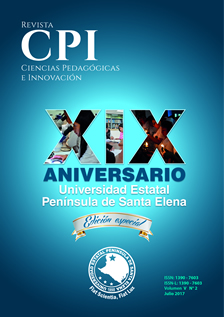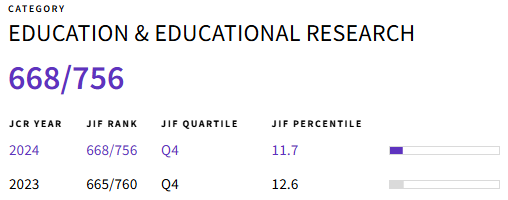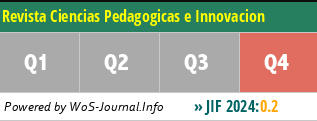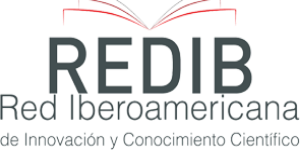Level of structuration of chemical concepts in students in the first semester of Petroleum Engineering in UPSE
DOI:
https://doi.org/10.26423/rcpi.v5i2.169Keywords:
UPSE, associations of terms, knowledge, Chemistry, studentAbstract
Approximately 60-65 students enters each year in the UPSE, aspiringto graduate as Petroleum Engineers. The analysis of associations of chemical terms in these students at the beginning of the course provides information about the degree of structuring of previous knowledge that they handle in the area of Chemistry. An instrument for evaluating word associations was applied to a group of 25 students from the first semester of the Petroleum Engineering Career, just on their first day in the classroom, in order to establish the level of structuring of previous knowledge in Chemistry that they bring from the High School. Very few statistically significant associations were detected, being the most relevant the identification of chemical elements; there are weaker associations linked around the concepts of the atom and dissolutions. The only cluster of associated terms is Potassium-Element-Metallic-Polar-Bond. The absence of bi-directionality in evoking terms suggests that knowledge is still poorly structured. The absence of significant associations with the meaning of mol makes clear the great difficulties that university student’s later show for stoichiometric calculations
Downloads
References
Orantes A. De la Impericia a la Excelencia: Análisis de las diferencias Experto Novato. RevistaInvestigacióny Postgrado. 1988;3(4):1–6.
Naveh-Benjamin M, Mckeachie WJ, Lin Y, Tucker DG. Inferring Student's Cognitive Structures and Their Development Using the“ Ordered Tree Technique". Journal of EducationalPsychology. 1986;78(2):130–40.
Amarillas M, Jacobo H. Comunicación en la interacción didáctica: autopoiésis y aprendizaje. In: Concept Maps: Theory, Methodology, Technology. Proceedings of the First International Conference on Concept Mapping. Pamplona, España; 2004.
Ceballos J, Murcia J, Camacho J. Un análisis de la estructura de las ideas, en textos sobre evolución biológica, adaptando la técnica de árboles ordenados. En: XX Encuentros de Didáctica de las Ciencias Experimentales. La Laguna, Tenerife, España: Centro Superior de Educación, Universidad de La Laguna; 2002. p. 10 p.
Hirtle SC. Ordered Trees: A Structure for the Mental Representation of Information. In: Susanne M. Humphrey and Barbara H. Kwasnik, editor. Proceedings of the 1st ASIS SIG/CR Classification Research Workshop. 1990. p. 79–86.
Downloads
Published
Issue
Section
License
El titular de los derechos de autor de la obra, otorga derechos de uso a los lectores mediante la licencia Creative Commons Atribución-NoComercial-CompartirIgual 4.0 Internacional. Esto permite el acceso gratuito inmediato a la obra y permite a cualquier usuario leer, descargar, copiar, distribuir, imprimir, buscar o vincular a los textos completos de los artículos, rastrearlos para su indexación, pasarlos como datos al software o usarlos para cualquier otro propósito legal.
Cuando la obra es aprobada y aceptada para su publicación, los autores conservan los derechos de autor sin restricciones, cediendo únicamente los derechos de reproducción, distribución para su explotación en formato de papel, así como en cualquier otro soporte magnético, óptico y digital.

















